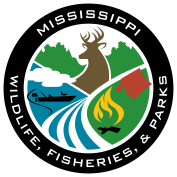
Written by: Pierce Young
If you're a landowner interested in timber revenue, deer, turkeys, or quail, you're going to have to be involved with timber management at some degree. When getting timber cut there are 4 essential key components to the process that could be included to ensure it goes smoothly and meets closer to your expectations.
✅️ Professional Consulting Forester
✅️ Timber Sale Contract
✅️ Forestry Best Management Practices (BMPs)
✅️ Surety Bond/Performance Bond
Consulting Forester
There are many people that could be included in the process, such as wildlife biologists, foresters, timber buyers, and loggers, and many landowners might think they are all the same proffession, but there are key differences. The most important in this process is a forester. A wildlife management professional may know what needs to be done with a forest to benefit wildlife, but not the specifics to ensure timber management is sustainable long-term.
A forester can develop a management plan, estimate timber volume and value, mark trees for harvest, help secure competitive bids from buyers, formulate a timber sale contract, estimate a proper surety bond, and make sure loggers follow forestry BMPs.
Timber Sale Contract
A written timber sale contract is critical and should include:
Description of timber to be sold: Species, volume, how trees are marked, etc.
Payment terms: Lump sum vs. pay-as-cut.
Harvest area boundaries: Clearly marked and agreed upon.
Timeframe for cutting: Start and completion dates.
BMP compliance requirements: Explicit responsibility for following environmental practices.
Damage clauses: Responsibility for any damage to residual trees, roads, fences, or other property.
Road and site restoration: Requirements for cleanup and erosion control after logging.
Dispute resolution and penalties: Procedures if terms are violated.
Having a forester or legal advisor review the contract is strongly advised.
Best Management Practices (BMPs)
BMPs are guidelines designed to minimize environmental impact during logging. They typically include:
Soil protection: Avoiding rutting and compaction by controlling equipment movement and harvesting during dry conditions.
Water quality protection: Maintaining buffer zones near streams, using proper stream crossings, and stabilizing roads to reduce erosion.
Habitat preservation: Avoiding damage to non-target trees, and minimizing landscape disturbance.
Post-harvest responsibilities: Closing skid trails, seeding bare soil to prevent erosion, ensuring debris is not left in streams or roads, and ensuring trash is not left behind.
Surety Bond/Performance Bond
A surety bond/performance bond is a financial guarantee (often issued by a third party) that protects the landowner if the logger or buyer fails to meet the terms of the contract.
Example: If a logger leaves roads damaged or fails to clean up debris, the surety bond can be claimed by the landowner to pay for repairs.
Including a surety bond requirement in the contract adds a layer of protection for the landowner, and provides financial security and incentivizes for the buyer/logger to perform responsibly.